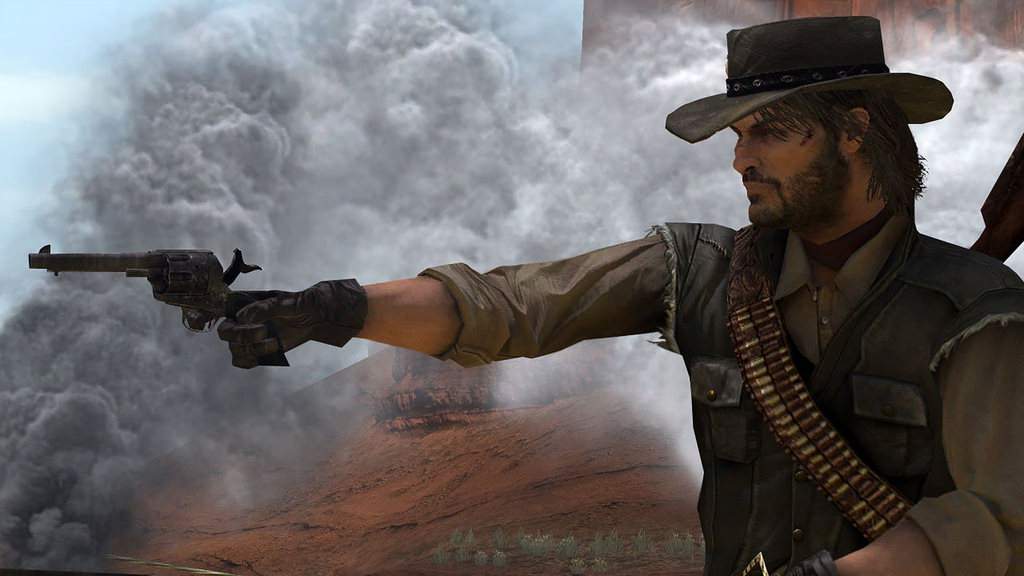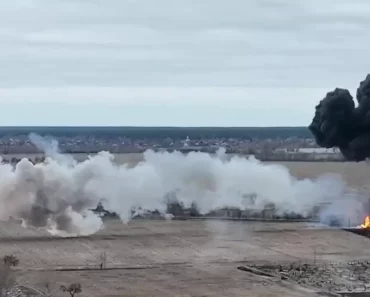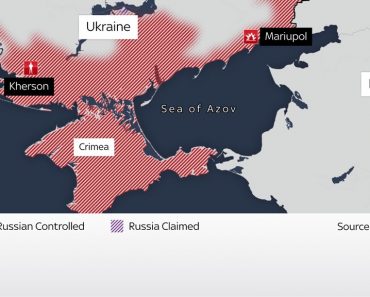The “Wild West” spans from around the conclusion of the American Civil War in 1865 to the turn of the century.
It recounts the exploits of cowboys, Indians, outlaws, and gunslingers, as well as those of the pioneers, settlers, cattle barons, gold miners, railroaders, and steamboaters.
Wyatt Earp, Doc Holliday, Bat Masterson, Billy the Kid, Calamity Jane, and Belle Starr are just a few of the well-known figures from the Old West.
Many pioneers headed west after the arrival of European immigrants in the Americas with the hopes of starting over and finding economic success.
Land, fertile soil, and fresh prospects to grow wealthy were available in the West, but not in the East.
The Town Calmer With Two Left Hooks
Thomas James Smith, popularly known as “Bear River Smith,” was a lawman in the American Wild West and the marshal of Abilene, Kansas. He was born on June 12, 1830, and died on November 2, 1870.
Smith, originally from New York City where he served as a police officer, was a reserved guy with a tough reputation.
After being implicated in the unintentional death of a fourteen-year-old child in New York City in 1868, Smith resigned from his position as a police officer.
In addition to his time in Kit Carson, Colorado, he also spent time as a lawman in the Wyoming community of Bear River.
Deputy Marshal of Abilene
Abilene, Kansas was known as a lawless cow town full of saloons and brothels.
Murders and shootings have been commonplace since 1867 when crime levels first began to rise.
In 1869, Tom Smith believed that he could keep the peace in Abilene without resorting to violence, despite being commissioned as a Deputy US Marshal.
As soon as he took office, Smith used only his bare fists to defeat “Big Hank” Hawkins & “Wyoming Frank,” and then he expelled them from Abilene.
Smith also enacted the controversial “no firearms in the town boundaries” rule.
Smith was the target of two separate attempts on his life over the course of two months.
A number of lawbreakers were arrested by him, and as a result, he gained the respect and admiration of the people of Abilene for his toughness.
On November 2, 1870, Smith and then a temporary deputy proceeded to serve a warrant on Andrew McConnell & Moses Miles for the murder of another Abilene resident.
They tracked down the bad guys about 10 miles outside of Abilene when a shootout ensued.
Smith was shot many times in the chest, and his deputy ran away.
Then Moses Miles got an axe and chopped off Tom Smith’s head.
Both McConnell & Miles were apprehended in March of 1871.
After Moses Miles served 16 years in jail, he was freed, and Andrew McConnell received a 12-year sentence.
Tom Smith was laid to rest in Abilene, where a monumental headstone with a commemorative plaque was constructed in his honor.
In Smith’s stead as the marshal was the infamous lawman & gunfighter “Wild Bill” Hickock.
In the 1965 episode “No Gun Behind His Badge,” Ronald Reagan, as the presenter of the syndicated western television series Death Valley Days, portrayed Smith.
Run Colter’s
John Colter (c.1770–1775 – May 7, 1812, or November 22, 1813) was an explorer and mountain man who participated in the Lewis and Clark Expedition of 1803–1806 commissioned by President Thomas Jefferson to explore and map the territory in the American Northwest that had been purchased from Napoleonic France in 1803.
Colter, during the winter of 1807-1808, was the first person of European origin to explore the area that would become Yellowstone National Park and the first to glimpse the Teton Mountain Range.
The Blackfeet
Colter and John Potts, both of whom had been on the Lewis and Clark expedition, were trapping beaver for the lucrative fur trade in the area around the Jefferson River in modern-day Montana in 1809 when they came upon many hundred of the feared Blackfeet Indians.
Blackfeet insisted they disembark immediately.
Colter submitted, and as a result, he was unarmed and uncovered.
When Potts refused, he was shot in the leg.
After killing one of the Indian warriors, Potts was pelted with arrows from the beach by the other Indians.
His corpse was afterward dragged ashore and butchered.
Run-For-Life
The Blackfeet agreed to let Colter escape by having the Indians go after him with spears after they discussed how to murder him.
They drove him to an open area and gave him a 300-400 yard head start.
Colter realized that his only hope of survival was to outpace the Blackfeet.
He began his flight across the plain, and he eventually outran all but one of the Indians, who was following around twenty yards behind.
He had halted, spun around, and opened his arms in a defensive stance in preparation for the inevitable spear throw.
The Indian was so spent from sprinting that he collapsed as he attempted to hurl his spear in surprise.
Colter grabbed the spear from his dead hand and began running, leaving the other Indians in his dust.
Five miles after leaving, Colter made it to the Madison River, where he sheltered beside a beaver lodge by ducking beneath a piece of driftwood.
The Blackfeet were shouting his name as they combed both sides of the river in search of him.
He waited until nightfall, then got out and made his way, shivering and naked, to a trading post.
Colter became weak from hunger and weariness, eating nothing but roots and bark, and his feet were wounded from being pricked by cactus needles.
Incredibly, Colter made it to Manuel Lisa’s Fort in only seven days, where he was warmly welcomed by his pals.
In the following weeks, he recovered enough to make the trip back to Blackfeet territory that winter to retrieve the traps he had abandoned.
Five years after his astonishing marathon, John Colter died in Missouri of jaundice and was buried in an unmarked tomb.
In the words of Alexander Todd
Alexander Todd, once a clerk, caught the gold fever and headed to California.
He quickly found he lacked the energy required for the arduous job in Mother Lode’s gold fields and frigid rivers (a rich source of an ore or mineral).
But it wasn’t long before he discovered ways to generate money that didn’t involve prospecting for gold.
Urge for gold in California
Due to the rapid population growth caused by the gold rush, mail delivery from San Francisco to the Mother Lode region was a time-consuming and laborious process.
The government began sending mail to California across the Isthmus of Panama, a path that was as long and uncertain for the postal service as it had been for the Forty-Niners (gold seekers in the California gold rush of 1849).
Todd visited each mining camp and recruited lone workers who longed for contact with their families.
It would take you two weeks to go to and from San Francisco, which is where the closest post office is located.
Because they couldn’t afford to be away from their claim for so long, the miners subscribed to the postal service.
Starting on July 14, 1849, Todd would personally transport any mail he discovered for addresses in the mining camp to the San Francisco post office in exchange for $2.50 for each letter and an ounce of gold, or $16 total.
On his first journey, he was paid $7,500 to transport $150,000 in gold from a group of merchants to a San Francisco firm.
In order to examine the piles of mail personally, charging twenty-five cents for each letter he discovered, Todd submitted the huge list of names to the clerk at the San Francisco post office, who swore Todd in as a postal clerk.
That was OK with Todd since he had found a new method to generate money, so it didn’t worry him.
He spent $1 for each of the out-of-date New York papers, then made $8 on each sale in the gold fields.
He also initiated the practice of packaging gold from mining sites and depositing it in San Francisco in return for a fee of five percent of the metal’s worth.
His efforts were always fruitful.
Alexander Todd amassed a fortune via innovation and old-fashioned American grit without ever picking up a pick or shovel.
John Marion Russell’s father was Charles Marion Russell (1864 – 1926)
On March 19, 1864, in St. Louis, Missouri, was born Charles Marion Russell, later known as “the cowboy artist,” storyteller, and novelist (also recognized as C. M. Russell, Charlie Russell, and “Kid” Russell).
He was an American Wild West artist who produced over four thousand pieces in paint, bronze, ink, and wax depicting cowboys, Indians, & landscapes in the American West and Alberta, Canada.
Russell was fascinated by the “Wild West,” and he spent many hours reading about it and chatting with Missouri’s visiting explorers and fur merchants.
At Hazel Dell Farm, outside Jerseyville, Illinois, he learned to ride from Col. William H. Fulkerson, a member of the Russell family who had married into the family and therefore had access to the legendary Civil War horse Great Britain.
After dropping out of school at the age of sixteen, Russell worked as a cowboy on a Montana sheep ranch for Jake Hoover, a former hunter and trapper turned rancher, living out his Wild West fantasies.
They became close friends and he learned a lot from Hoover about the Wild West.
At the age of 18, Russell began his career as a cowboy in Montana with many different ranches in 1882.
In 1885, he officially launched his career as an artist.
Many of his paintings were created during the winter of 1886–1887, while he was working on the O-H Ranch in the Judith Basin of central Montana.
When the ranch owner wrote to find out how the cattle had fared during the winter, the foreman responded with a watercolor postcard depicting a ragged steer being attacked by wolves against a bleak winter sky that Russell had painted.
Eventually, the ranch owner exhibited the postcard in a store window in Helena, Montana, where it was seen by friends and business associates, giving Russell his first taste of notoriety and leading to requests for new work.
The watercolor “Waiting for a Chinook” is one of his most well-known paintings.
Culture of the Native Americans
After spending time with the Blood Indians, a subgroup of the Blackfeet, in 1888, Russell was able to gain a deeper understanding of Native American culture.
He later fought for the creation of a reservation in Montana for the Chippewa people.
The Rocky Boy Reservation was established by law in 1916.
Marriage
He moved to Great Falls, Montana in 1892 and wed Nancy two years later.
Additionally, he modeled 46 subjects for bronze casting between 1904 and 1926.
Painted in 1914, “When the Land Belonged to God” is a wistful reflection on the artist’s early years in the American West.
Respect All Over the World
As a result of his success, Charles Marion Russell was recognized all over the globe.
*Over one hundred thousand dollars was made through the sale of four paintings by Russell.
The price tag for “Water Girl (No. 1)” was $220,000.
Blood Chief* made $200,000 in revenue.
The price tag on the “Portrait of Indian” was a cool $150,000.
His 1918 work Piegans brought about $5.6 million at auction.
The National Cowboy & Western Heritage Museum recognized him as a Great Westerner and enshrined him in their Hall of Great Westerners in 1955.
Traditional Stetson Caps are Famous All Over the World
John Batterson Stetson, an American hatter who created the iconic cowboy hat in 1865 during the height of the Gold Rush, lived from May 5, 1830, to February 18, 1906.
The Stetson is the most recognizable hat in the world, and it has come to represent the cowboy way of life.
Much like baseball, apple pie, and the Fourth of July, it has become an American icon.
John B. Stetson Company, of which Stetson was a part, had its name imprinted in gold on every hatband, and the hat quickly became a Western icon.
In the year 1900, he had the greatest hat factory in the world, all thanks to the five dollars he made from the sale of his first hat.
Stetson, John B.
John B. Stetson, the eighth of a total of 12, entered this world in New Jersey.
John Stetson apprenticed under his hatter father, Stephen, until the latter’s death from disease.
In 1859, he quit his job as a hatmaker in the hopes of curing his TB in a healthier, more natural setting in the American West.
Pike’s Peak, Colorado was the site of one of the largest gold rushes in North American history, and he worked there at that time.
Stetson met drovers, bullwhackers, and cowboys during his time in the West and noticed that many of them wore inadequate headwear such as flea-infested coonskin caps, sea captain’s hats, straw hats, and wool derbies.
He believed that the harsh conditions of the West called for an all-weather hat, so he created one out of waterproof felt with a broad brim and a four-inch crown, and a basic strap band.
“Big Man on the Grass”
For the needs of the American West, Stetson returned to Philadelphia in 1865 and established the John B. Stetson Company, a manufacturer of hats modeled after those worn by the Vaqueros (cowboys) of Northern Mexico.
As a sign of power and sophistication, he mass-produced the “Boss of the Plains” hat.
The wide brim offered relief from the scorching rays of the sun.
You could give a horse a drink with the crown.
The wearer might use the brim as a cup.
It was possible to direct cows in a particular direction by using the hat.
More than that, it could be used as kindling for a fire.
Notable Individuals Who Rocked a Stetson
Stetsons were often worn by famous figures from the American West, including Buffalo Bill Cody, Calamity Jane, and Annie Oakley.
Tom Mix, Will Rogers, Roy Rogers, the Lone Ranger, and John Wayne were just a few of the legendary cowboy performers that played the part.
Both Theodore Roosevelt and Ronald Reagan wore Stetsons throughout their terms as president.
The National Park Service, the U.S. Cavalry, and the Texas Rangers all used hats created by this business.
Free Speech and Alternative Media are under attack by the Deep State. Real News Cast needs reader support to survive. Please Contribute via GoGetFunding



